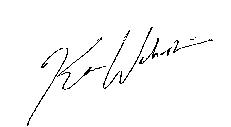Welcome to Heilkunst
I SHOULD KNOW I AM IN TROUBLE when I answer the phone and both Rudi Verspoor and Patty Smith are on the line.
Each of these two people is very persuasive in his or her own right, mostly through the powerful means of inviting one to share some inspiring vision. But they usually do this on an individual basis. What hope would I have of resisting whatever idea had induced both of them to ask me?
This is what I began to wonder late last year as soon as I heard the two familiar, speakerphone-distorted voices greeting me, Rudi’s quiet with Silica reserve, Patty’s bubbling with her usual Phosphorescence. The idea was an obvious one, on retrospect: they felt the community of people interested in the Verspoor/Decker-interpreted complete art of Hahnemann was large enough to support, and need, a scholarly journal. As well there was a general need for a forum for publications on approaches which seem untraditional or unhomeopathic but still lie within the sphere of Hahnemann’s Heilkunst (either mentioned in his work, or conforming in spirit to the principles he laid out) — work which otherwise might never see the light of day.
All Rudi and Patty wanted to know from me was whether I would edit it. Not a chance I would say no to that.
Thus Heilkunst, the journal, came into being.
The collection of work you have before you I did the routine work of gathering, editing and publishing, but I could not have put it together without Rudi’s and Patty’s contacts and groundwork. They also contributed ideas such as mini-cases and therapeutic tips, as well as the Leonardo da Vinci-inspired logo I have used for the main title.
They also suggested that when British Institute of Homeopathy principal Trevor Cook drops gems from his vast store of homeopathic historical knowledge, I should pick them up; thus "Historic Notes" was born.
The 1998 NUPATH conference in Toronto was an excellent source, as it turned out, for contacts and ideas. There, I met Melissa Assilem, and (along with a roomful of other full-grown, professional people, in a perfectly respectable downtown hotel) howled like a wolf at her bidding (as part of the participative portion of her presentation of the remedy Lac lupaninum). This ability to inspire, not to mention Melissa’s stature as a homeopath, made me dearly want a contribution from her, and so (with Patty’s aid) I asked, and received her "confessions" (more affirmations, in truth.)
At that conference also, I saw a presentation by François Jooste, drawing from a clearly vast pool of knowledge not only of homeopathy but of allopathic pharmacy. I had the good fortune to receive from him a paper on multiple allopathic drug treatment, which is also a case study of a woman who desperately needed extrication from the work of a pill-happy doctor.
Rudi and Patty provided papers also, Rudi’s in answer to my question of how, in his sequential approach, he had come to so emphasize emotional trauma when Elmiger’s original technique focused on physical, while Patty provided a thorough and detailed veterinary case study, the story of a Maine Coon cat saved from surgical penis removal by Heilkunst.
Rounding out our practitioner papers is one by Sherry Arrick in which she discusses the use of the extremely powerful "Elemental Trauma Remedy," and a detailed one-remedy mini-case by Maria Theresa Bohle.
But I also thought to myself, "When do patients ever get a say in a publication practitioners read?" In our field we are committed to hearing the words of our patients and placing great weight on their subjective experiences; why not publish them as well? Thus "Patient Perspectives" came to be. It can’t hurt if the patient already happens to be a published fiction writer and poet, as is Shirley Meier.
I wanted to devote my time entirely to editing, but I did recycle a review of the first book on sequential therapy, Rediscovering Real Medicine by Jean Elmiger, originally posted on the British Institute of Homeopathy Online Study Group. I also contributed a therapeutic tip, as did Trevor Cook. Virginia Downey has written us an elegant tribute to the late Edward C. Whitmont.
Finally, for brainteaser lovers, I asked Lois Hoffer to exercise her ability (or is it a symptom?) with puns and associations to create a "Homeopuzzle" just for Heilkunst.
I hope you find our premier issue
stimulating, fascinating and in some parts astonishing. Enjoy!
